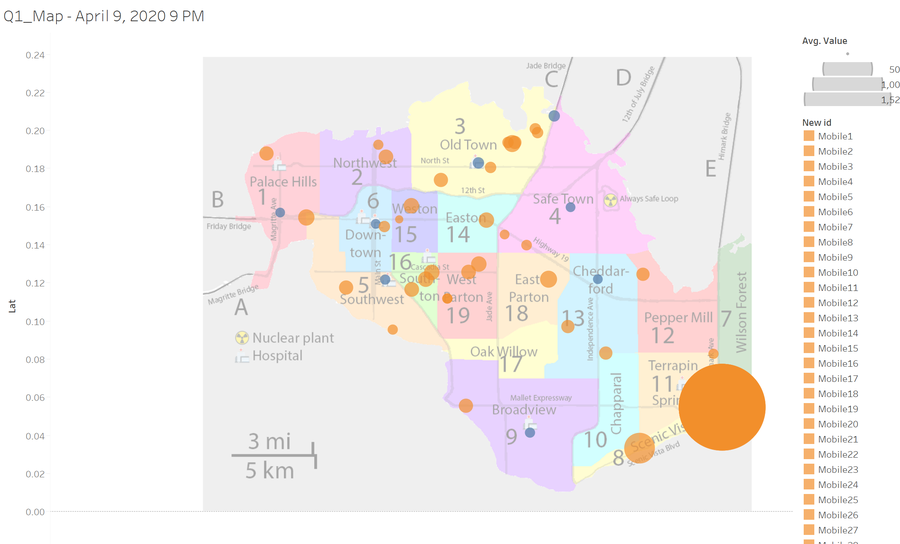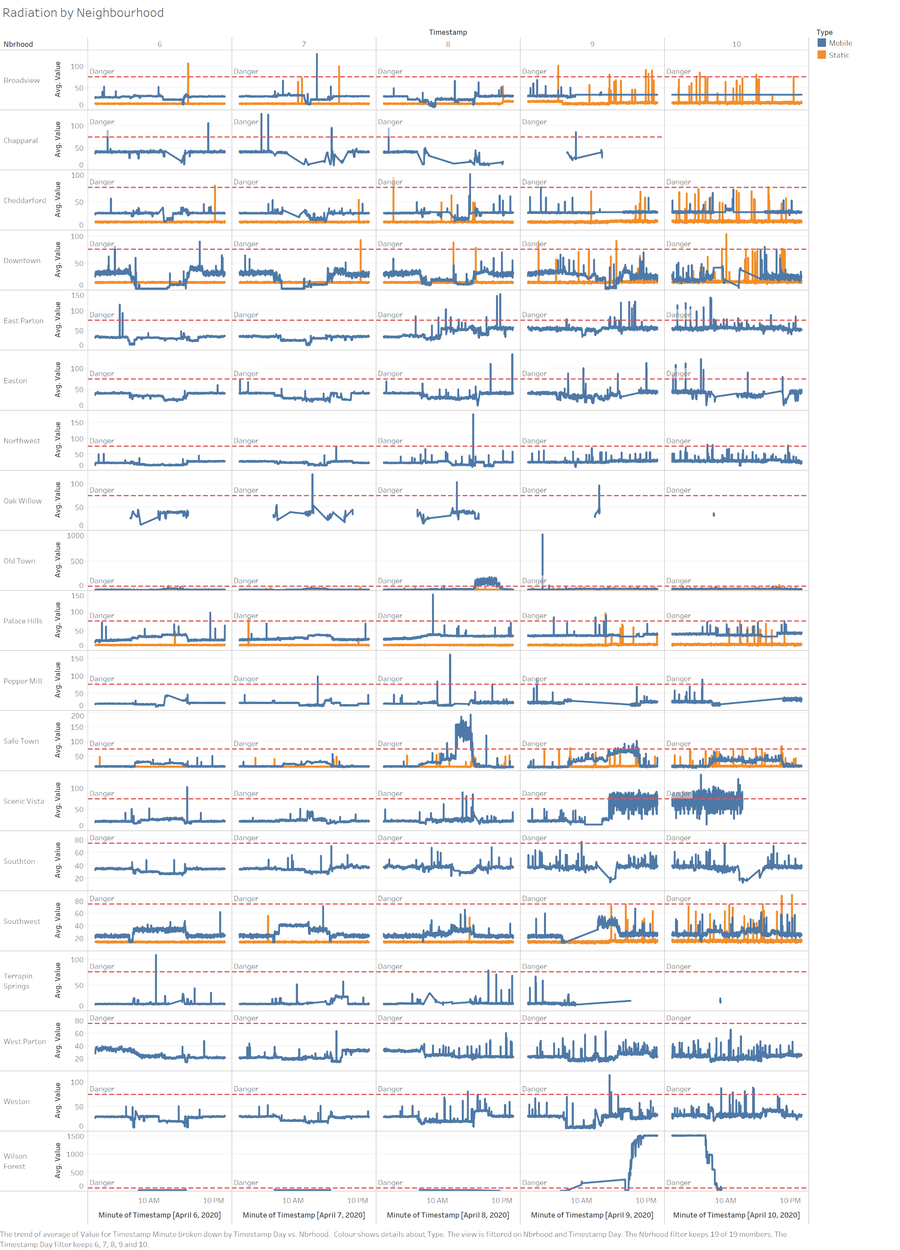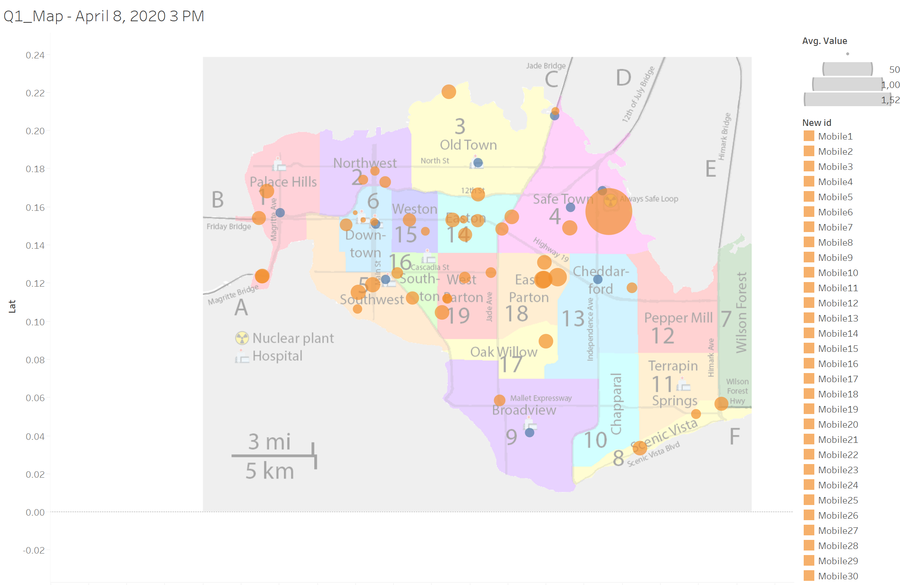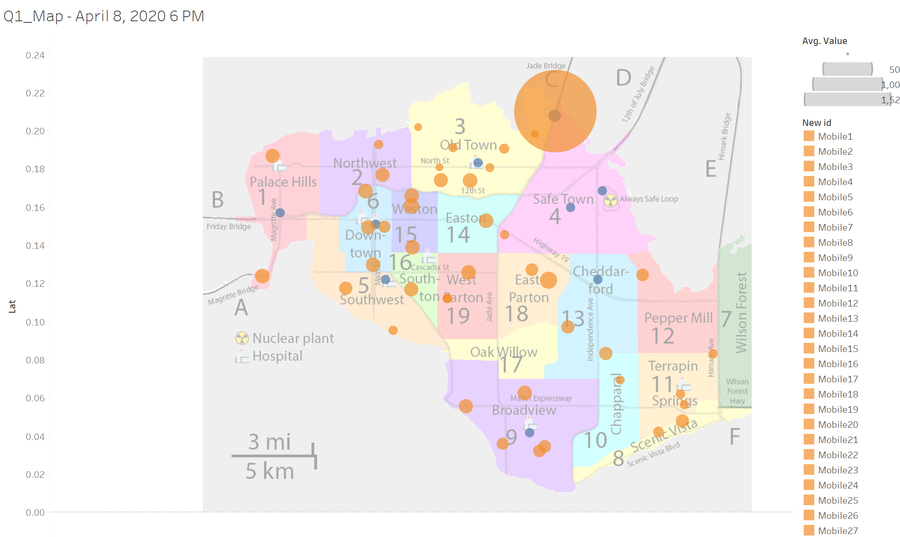Difference between revisions of "IS428 AY2019-20T1 Assign Ho Jue Hong Question"
| Line 36: | Line 36: | ||
On 9th April, we can see Safe Town has a sudden spike in radiation, tending towards the unhealthy zone and the neighbourhood Scenic Vista had a huge fluctuation of radiation alternating between the healthy and unhealthy range. The place that took the worst hit was the Wilson forest with an average of 1,093 CPM for the day. The radiation was 14 times over the unhealthy limit. From the two town hits on the 9th April, we could say the wind was travelling in a curved shape. </br></br> | On 9th April, we can see Safe Town has a sudden spike in radiation, tending towards the unhealthy zone and the neighbourhood Scenic Vista had a huge fluctuation of radiation alternating between the healthy and unhealthy range. The place that took the worst hit was the Wilson forest with an average of 1,093 CPM for the day. The radiation was 14 times over the unhealthy limit. From the two town hits on the 9th April, we could say the wind was travelling in a curved shape. </br></br> | ||
On 10th April, We can see that the only two towns still being affected by unhealthy radiation are, Wilson forest and Scenic Vista. | On 10th April, We can see that the only two towns still being affected by unhealthy radiation are, Wilson forest and Scenic Vista. | ||
| + | |||
| + | </br></br> | ||
| + | [[File:pro-map.png|center|thumb|upright=3|We can see here that there is the first spike in radiation near the nuclear powerplant, I do suspect that there is some sort of accident that happened this period ]] | ||
| + | </br></br> | ||
| + | [[File:map2.png|center|thumb|upright=3| There seems to be some problem with Static Sensor 12 because when mobile sensor 10 was near it, it showed a huge spike in radiation but the static sensor seemed to be very normal. Either Static Sensor 12 had problems or Mobile Sensor 10 had issues.]] | ||
| + | </br></br> | ||
| + | [[File:map_3.png|center|thumb|upright=3|Lastly We can see the spike in radiation for most of the Mobile Sensors that were stationed near Wilson Forest from Mobile Sensor 20 to 25, the only Sensor that shows inconsistent readings is Mobile Sensor 23, Mobile Sensors 28 and 29 shows equally high radiation readings and 30 showed a small reading despite being in the same area, hence we can conclude that there was indeed a radiation spike because of the data collected from the various number of mobile sensors ]] | ||
| + | |||
| + | == Question 2 == | ||
| + | '''Use visual analytics to represent and analyze uncertainty in the measurement of radiation across the city.'''</br></br> | ||
| + | '''Compare uncertainty of the static sensors to the mobile sensors. What anomalies can you see? Are there sensors that are too uncertain to trust?'''</br></br> | ||
| + | '''Which regions of the city have greater uncertainty of radiation measurement? Use visual analytics to explain your rationale.'''</br></br> | ||
| + | '''What effects do you see in the sensor readings after the earthquake and other major events? What effect do these events have on uncertainty?'''</br></br> | ||
Revision as of 12:51, 13 October 2019
MINI-CHALLENGE 2: CITIZEN SCIENCE TO THE RESCUE
Question 1
Visualize radiation measurements over time from both static and mobile sensors to identify areas where radiation over background is detected. Characterize changes over time.
Given the question, I have plotted every minute of each day in the data provided. With the merger of the dataset with the Neighbourhood data, this is the level of radiation plotted over a 5 Days period. There are two types of sensors used to pick up the readings, the line denoted in blue is by the mobile sensor and the line in orange is picked up by static sensors. Across every graph plotted, there is a dotted red line. The red line is set at a value of 75 CPM, which means that any data point plotted above that value means that the radiation is very dangerous.
On the 6th April, we can see that the radiation across all neighbourhoods is relatively safe, with some spikes in the data point which lasts less than a minute. Hence there is nothing out of the blue on the 6th April.
On the 7th April, everything was similar to the 6th of April, everything is relatively safe with some random spikes in the data. Hence everything seems normal on 7th April.
On the 8th April, we can see a sharp spike in the radiation levels at Safe Town from 1:21 P.M. to 4:30 P.M. before Old town had a similar spike at 4:55 P.M. all the way to 9:28 P.M. Other then this two towns which has a prolong period of unhealthy radiation, the rest of the town seemed ok. Coincidentally, the nuclear powerplant is located at Safe Town and Old Town is situated right beside Safe Town. We can generally summarise that winds were blowing westwards.
On 9th April, we can see Safe Town has a sudden spike in radiation, tending towards the unhealthy zone and the neighbourhood Scenic Vista had a huge fluctuation of radiation alternating between the healthy and unhealthy range. The place that took the worst hit was the Wilson forest with an average of 1,093 CPM for the day. The radiation was 14 times over the unhealthy limit. From the two town hits on the 9th April, we could say the wind was travelling in a curved shape.
On 10th April, We can see that the only two towns still being affected by unhealthy radiation are, Wilson forest and Scenic Vista.

Question 2
Use visual analytics to represent and analyze uncertainty in the measurement of radiation across the city.
Compare uncertainty of the static sensors to the mobile sensors. What anomalies can you see? Are there sensors that are too uncertain to trust?
Which regions of the city have greater uncertainty of radiation measurement? Use visual analytics to explain your rationale.
What effects do you see in the sensor readings after the earthquake and other major events? What effect do these events have on uncertainty?


